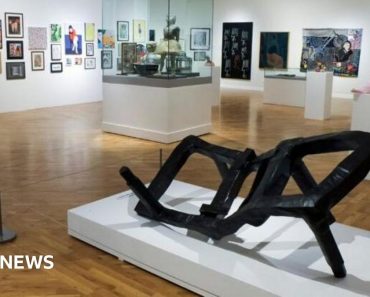
Photo: Hurst Publishers
From the Roman Empire to Russian Tsars and the Scottish Highlands, Richard McLauchlan’s new book The Bagpipes: A Cultural History explores the mythology, history, and global reverberations of the instrument often as reviled for its volume as it is revered for its resonance.
MacLachlan told Sunday Morning’s Jim Mora his lifelong fascination began early as a boy after bearing witness to the Edinburgh Military Tattoo.
“I saw the lone piper high up on the parapets at Edinburgh Castle and heard him play his lament. And it just moved me, and I knew I had to do that.
“I think I used to, prance around the living room with a cushion tucked under my arm and some, bamboo cane sort of sticking up out of it, and with a tartan tea cloth around my waist.”
“I saw this lone piper silhouetted on the parapets… and I was utterly bewitched.”
That childhood passion eventually led to a pipe major’s role and international tours, the instrument for him was both a “passport” and a paradox: deeply local and wildly global.
Beyond the Highlands: A Global Clan
Though eternally associated with Scotland, MacLachlan said the bagpipes are anything but a regional quirk. MacLachlan’s research traces their cultural lineage through Malta, India, and the Mediterranean.
The earliest named piper, he said was none other than the Roman Emperor Nero.
“A Greek chronicler talks about him playing a pipe, a Greek aulos, with his mouth and with a bag tucked under his armpit. And this really is the earliest concrete evidence we have.”
Today he said there are estimated to be more than 30 variations globally, from the stately Northumbrian smallpipes to the wholly bizarre Maltese goat-pipe that uses the entire animal.
From New Zealand’s Pūhoi Bohemian piping tradition to the piping communities of Canada, the United States, and Australia. Worldwide bagpipes are an emotional trigger, moving listeners of all cultures despite their often jarring tonalities.
An instrument of war and worship
In the popular imagination, bagpipes are forever tied to warfare, stirring troops into frenzy.
MacLachlan recounts stories of extraordinary bravery from the 16th century through to the trenches of World War I such as Piper George Findlater, who, wounded twice during the assault on Dargai Heights in 1897, continued playing “The Haughs of Cromdale” to galvanize his comrades.
“You get this this long tradition of pipers playing not only in battle but then playing once injured and once hit and shot a long tradition of pipers achieving incredible acts of hero heroism and wanting to emulate their their forebears.”
Yet war is only part of the story he said. Bagpipes were also used in pastoral and sacred settings. Their association with shepherds appears in Christian iconography.
In the Middle Ages, however, pipers and other musicians were viewed with suspicion. Seen as morally ambiguous and legally incompetent, they were banned from holding civic office or testifying in court.
The bizarre, the macabre, and the musical
MacLachlan revels in the weirder footnotes of bagpipe history.
Tsar Peter the Great, mourning a beloved bear, allegedly had the animal’s remains turned into a set of pipes.
“One wonders if he if he actually tried to play them or not.”
Seal stomachs, ox hides, and even cats have all featured in bagpipe construction.
“Pipers seem to be pretty indiscriminate about what they use when it comes to creating their bagpipes.”
The Maltese bagpipe even uses a whole goat.
“Someone in Australia recreated this extraordinary instrument… you can see it on YouTube, puffing it back into life… there are the horns and the head and everything.”
Bagpipe myths, facts and memory
MacLachlan acknowledges that Scotland may not have even invented the bagpipes – a notion that could scandalise purists. England had pipers in royal courts long before the Scots, and much of the Gaelic piping tradition has roots in Irish culture.
“The English monarchs had, salaried pipers within their retinue. It would be wrong to write England out of the story…. notably with the Northumbrian small pipes.”
Yet debunking these myths doesn’t tarnish the bagpipe’s romanticism. Instead, he said it broadens our understanding.
“If you spoke to, a Galician bagpiper, or someone from, The Czech Republic they feel very powerfully and emotionally about their their forms of the bagpipes.”
Sign up for Ngā Pitopito Kōrero, a daily newsletter curated by our editors and delivered straight to your inbox every weekday.







